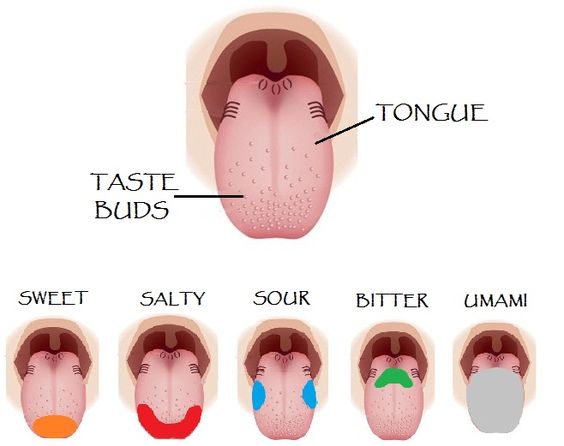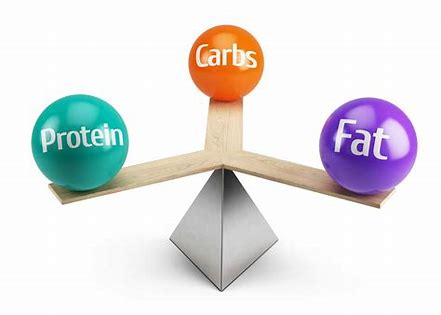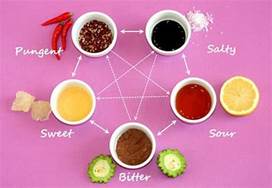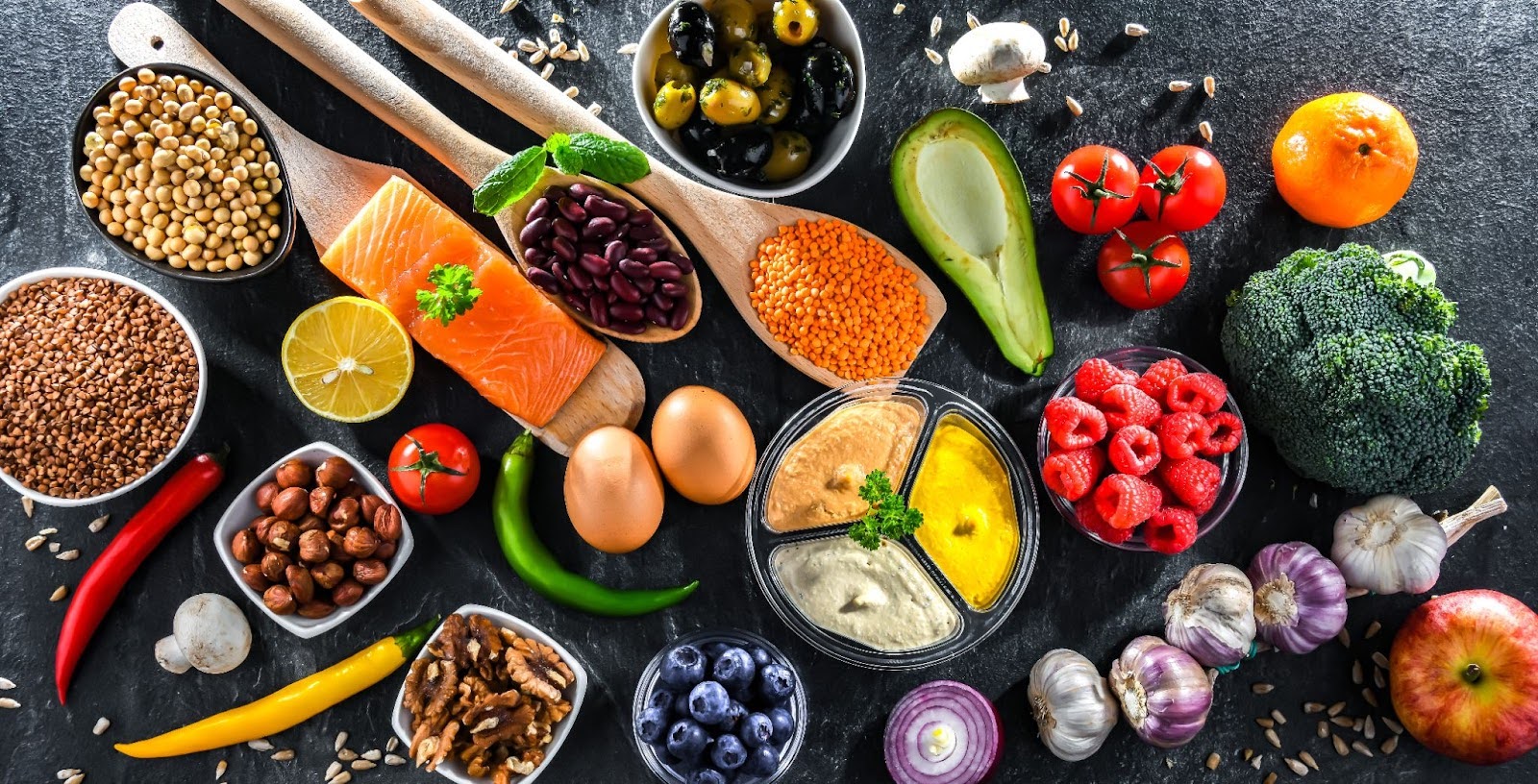
Are you always craving sweets and wondering how to kick the post-meal urge to splurge? You know my thing is about Intuitive Eating – meaning unconditional permission to eat all food whenever you want it. So just know that this article is not about “tricking” your brain to not want certain foods. It’s simply about re-training your tastes to want more variety and food that is super helpful for your body. Some of us have been brought up with very few foods perhaps lacking nutrient density. So, this is what we are going to talk about! We can actually retrain our taste buds to like healthier foods such as fermented foods, umami, and greens. But how, you may ask? Let’s find out some of the science behind all this first.

Taste buds are highly complex structures.
Thousands of them respond to temperature, and the physical sensations from food or drink coupled with smell send signals to the brain and ignite a perception: savory, sweet, acidic, acrid, bland, salty, balanced, and the range in between. Just like muscles, those taste buds need to be conditioned, tested, and strengthened so they can take on a broad spectrum of those flavors. This doesn’t mean you have to quit the less-healthy foods you love. That is so not what I’m saying in the least. It simply means you’re diversifying and developing a taste for more nutrient-dense cuisine.
You’ll learn to love foods such as spinach and other nutritious greens, celery, seaweed, citrus, fish, mushrooms, and tomatoes, which will forever change how you eat and will help you naturally fight disease. Woohoo! Who doesn’t want that?!
Here’s why we crave sugar…

You’ll often hear someone describe themselves as having a sweet tooth.
Ehem, is this you? 😉 No judgement.
You finish a meal and start freaking out about getting some dessert asap. I know you are wondering, is it a habit or a true physiological need for sugar? It could actually be a little bit of both if you aren’t getting enough protein, fat, or carbs in your meals. Check that balance out. If I undercut my fat at lunch I totally want to snack before I leave work before my dinner. Also, what you eat for breakfast sets the tone for the day. Don’t you feel that to be true? If you start your day with a pile of pancakes smothered in syrup, doughnuts, or even the perceived healthy option of sweetened yogurt with honey-laden granola, you train your taste buds to crave sugar and starchy foods for the rest of your waking moments. It’s kind of an American thing because when you look around the world, you find that most countries start their day savory.
In Japan, breakfast is sea vegetables, rice, and raw fish. In China, it’s congee, a rice porridge that can be seasoned with mushrooms or pork, among other things. In Egypt, it’s stewed brown fava beans with hummus, tahini, eggs, and pickled turnips. In Sweden, they’ll have slabs of whole-grain cracker bread with slices of cheese, pate, and pickles. In Spain, it’s bread rubbed with garlic and tomato. In India, it might be lentil dosas with sour chutney or a spicy lentil dal soup. In Australia, you can get your Vegemite on toast.
At a typical hotel breakfast buffet, you can get a stack of pancakes, cornflakes, chocolate milk, Danishes, muffins, waffles, toast, pound cake, and a variety of juices to wash it down with… and there you fall deep into your sugar coma. How do you feel the rest of the day? Our added sugar-laden breakfast habit has not done us much good in terms of our health, unfortunately. The same person who grew up eating sea vegetables and raw fish in Japan can acclimate to the sugary American diet in a heartbeat, but to go the opposite way takes a bit more persuasion and time. Just look at where those taste buds sit on the tongue! No seriously, look above at the picture. Study it. The ones that crave sugar and salt are hanging out just at the tip, waiting to get their rocks off on cookies, cake, and candy with a salt lick chaser. When you look at the physiological aspect of taste cravings, you begin to understand why it takes intentionality and brainpower to make those more nutrient-dense and varied choices. 100% worth it!

Your training regimen
That tongue has a mind of its own, and if it had its way, it would be dipping its little papillae into sugar and salt all day. So, it’s time to wake up what’s been in hibernation. Fermented and vinegar-based preparations, spices, and amino acids will play a big role.
When you retrain your taste buds, you also retrain your brain to crave different foods, and before you know it, you’ll see your plate from a different perspective. Imagine picking broccoli and Brussel sprouts over brownies. You’ll begin to actually crave greens, fermented foods, and umami in your daily routine.
The enlightenment of knowing what your body needs and feeding it properly is so next level! It will shift your mood, your energy level, how you handle stress, how you deal with your relationships, your ability to sleep, and every other aspect of your consciousness. You will crave good things. You’ll become stronger than you’ve ever felt, and you’ll develop a deeper appreciation for that incredible temple of yours. It’s that powerful, and I want you to experience it firsthand.
Reset your taste buds to get them on track.
Now, you wouldn’t expect a person trying to get fit at the gym to bench press 200 pounds off the bat or start showing off a six-pack in a week. I know… it’s the American mindset, but let’s open up that brain power. It can take trying a food up to 20 times before you develop a taste for it, so give greens a chance. Most of all, you will be giving your body a steady supply of nutrient-dense deliciousness while weaning yourself off the damaging effects of eating excess sugar, salt, and unhealthy fat.

Balance your meals.
Combine protein, fat, and complex carbs in every meal, focusing on bitter, sour, and umami flavors.
Enjoy at least one raw or mostly raw meal a day to get the maximum benefit out of your nutrients, enzymes, and probiotics without cooking them off. Like a fresh salad! Give your full focus to your food. Sit down, put aside the technology, and eat slowly, tasting every bite. This is your time to fall in love with flavor again.

To sum up, here are 8 ways to expand your taste buds:
1. Give another chance to foods you think you hate. Remember that trying it 20 times thing. We do this with our kids, why not ourselves? Taste buds typically become less sensitive with age, which allows you to enjoy foods that once tasted too strong or bitter, like Brussels sprouts, olives, or turnips.
2. Pair foods you dislike with those you love. If you’re blah about beets, but you do like blue cheese and walnuts, toss them all in a spinach salad. Experts use this conditioning strategy—called “flavor-flavor” learning—to help kids eat their veggies. I try this with my son by adding cheese to things.
3. Make small swaps. Switching to whole grains is easier when you gradually replace processed grains. Blend 1/3 brown rice and 2/3 white rice; over time, you can adjust the ratio until you eat 100 percent brown rice.
4. Give it time. Cultivating a taste for certain foods may require repeated exposure. Research from the Monell Chemical Senses Center found that when people consumed a bittersweet beverage once each day for a week, they wound up liking it 68 percent more than they did initially.
5. Educate yourself. It’s important to give yourself reasons to like foods with flavors you don’t naturally love. You can learn about, say, why kale is so good for you. It’s loaded with fiber, vitamins A, C, and K, calcium, iron, and other plant compounds etc. You’ll be more motivated to try and like it.
6. If you are really craving – eat what you’re craving! Remember to not fight against your brain and body. If you make food neutral it won’t have power over you.
7. The more flavors you have in one meal the more you might eat. Having too many choices at one time can stimulate your appetite and cause you to eat more than what your body needs at that time. It’s called sensory-specific satiety – the tendency to get full and lose interest in, say, a buttery piece of fish, but be able to continue the jasmine rice. When you limit the variety in a given meal, you’re more likely to feel satisfied sooner. Of course, if you want many flavors, go for it, but just know the science.
Just remember that other things can affect taste too. Antibiotics, morphine, other opioids, and radiation can change your taste as well.
Remember to live consciously and open-heartedly! Your body will benefit.
Miriam
Studio SWEAT Dietitian
Resources:
1. https://www.rd.com/health/healthy-eating/trick-your-taste-buds-eating-healthier/
2. https://nutritionfacts.org/2014/06/24/want-to-be-healthier-change-your-taste-buds/









Comments - 6